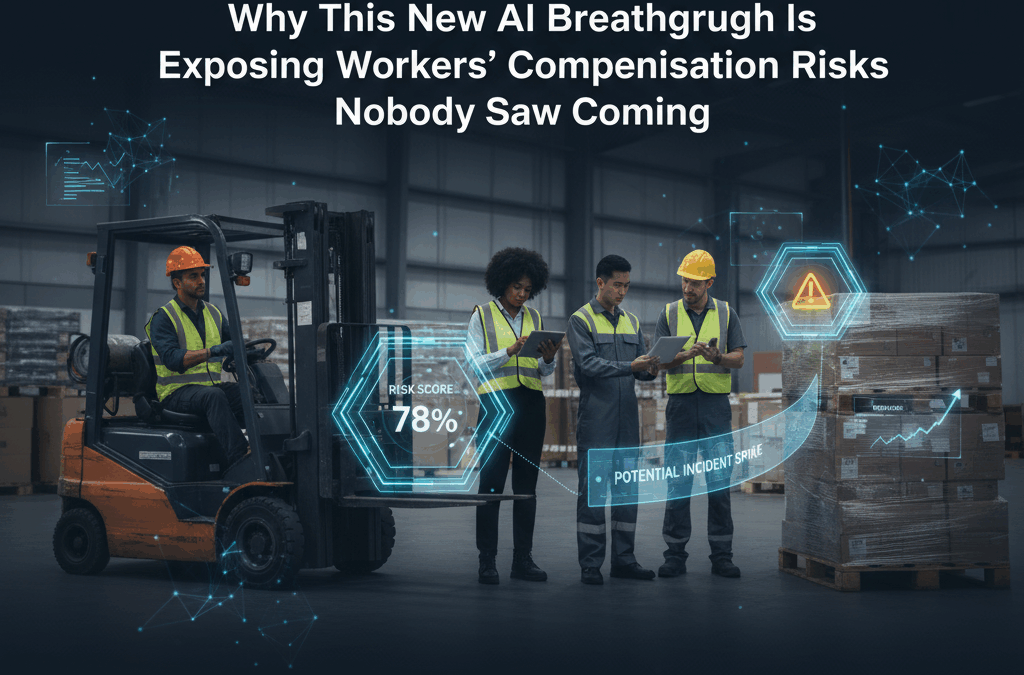Introduction
Workers’ compensation has always been reactive. A claim happens after someone gets hurt, and then the process begins. Medical costs, time off, paperwork, and insurance reviews all come after the injury.
But a quiet shift is happening in how some organizations manage workplace safety. Data analysis and new technology are giving employers the ability to see patterns that predict when and where injuries are most likely to occur. This change is not about replacing people with machines. It is about using information more wisely to protect them.
Professional Employer Organizations, or PEOs, are beginning to help companies apply these tools in practical ways. The goal is simple: fewer injuries, faster recovery, and smarter prevention.
1. Understanding Predictive Analytics in Workers’ Compensation
Predictive analytics means using data from the past to anticipate what might happen in the future. In workers’ compensation, this involves looking at injury trends, job roles, work schedules, and even environmental factors to identify risk before it becomes an accident.
For example, if data shows that minor injuries increase on certain shifts or in specific departments, that pattern may point to fatigue, equipment issues, or training gaps. By addressing those factors early, employers can prevent serious injuries later.
This approach turns workers’ compensation from a reactive expense into a proactive safety tool. It allows companies to act before harm occurs, saving both money and people from unnecessary pain.
2. How PEOs Bring Predictive Insights to Clients
Most small and mid-sized businesses do not have the resources to build complex analytics systems on their own. That is where PEOs come in.
PEOs collect large amounts of data across multiple industries and job types. They track claims, safety incidents, and return-to-work outcomes over time. By analyzing this information, they can help clients understand what drives risk in their specific environment.
For example, a PEO might notice that repetitive motion injuries are increasing among certain job roles. It can then recommend ergonomic adjustments or new training. Another client might learn that claims rise during seasonal peaks, leading to changes in staffing or scheduling.
The key advantage is access to shared intelligence. A single company might only see its own data, but a PEO sees thousands of cases and can identify patterns that others miss.
3. The Human Side of Predictive Prevention
Technology is only useful when it supports people. Predictive systems work best when combined with strong communication and trust inside the workplace.
When employees understand that safety data is used to protect them, not to monitor or punish them, they become part of the process. Reporting near misses, small hazards, or fatigue concerns gives the system better information. In return, leadership can respond with real improvements that employees can see.
This creates a cycle of prevention. The data highlights risks, workers contribute insights, and management takes action. Over time, it builds a culture of care rather than fear.
4. Turning Data into Action
Collecting data is only half the job. Acting on it is what makes the difference.
PEOs help employers translate findings into specific actions. That might mean redesigning a workspace, updating safety equipment, adjusting job rotations, or revising training schedules.
The process works best when it is continuous. Reviewing data monthly or quarterly helps companies track whether changes are reducing risk. It also reveals new patterns that may emerge as the workforce or operations evolve.
The combination of regular data review and clear action builds consistency. It keeps safety from becoming a one-time initiative and turns it into part of daily management.
5. The Future of Predictive Safety
The use of predictive analytics in workers’ compensation is still growing. Over time, it will likely become standard practice. Insurance carriers, PEOs, and employers are learning how to share information securely and use it responsibly.
The goal is not to predict every accident but to create conditions where fewer happen in the first place. As the tools improve, companies will be able to forecast risks more accurately, set better safety goals, and demonstrate measurable results.
The most forward-thinking organizations will use these insights to strengthen both trust and efficiency. They will see safety not as a cost, but as a reflection of leadership and care.
Conclusion
Predictive analytics is changing how employers and PEOs approach workers’ compensation. Instead of waiting for accidents to happen, companies can now see risks developing and take action before anyone gets hurt.
This progress does not replace human judgment—it strengthens it. When data supports experience, decisions become clearer and prevention becomes possible.
The result is a safer workplace, healthier employees, and a more stable business. The future of workers’ compensation is not about reacting faster. It is about thinking ahead.
References
- NAPEO. The Role of Predictive Data in Modern Workers’ Compensation Programs. 2024. napeo.org
- Questco. Using Analytics to Improve Workplace Safety and Reduce Claims. 2025. questco.com
- PEO Insider. From Claims to Prevention: How Data Is Reshaping Workers’ Compensation. 2025. peoinsider.org
- SBHSR Blog. How Predictive Safety Tools Help Employers Lower Workers’ Comp Costs. 2025. sbshr.com
- NetPEO Blog. Data-Driven Risk Prevention for Small Businesses. 2024. netpeo.com

